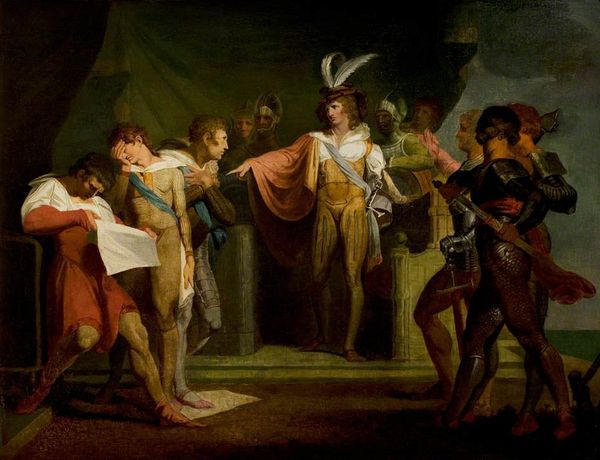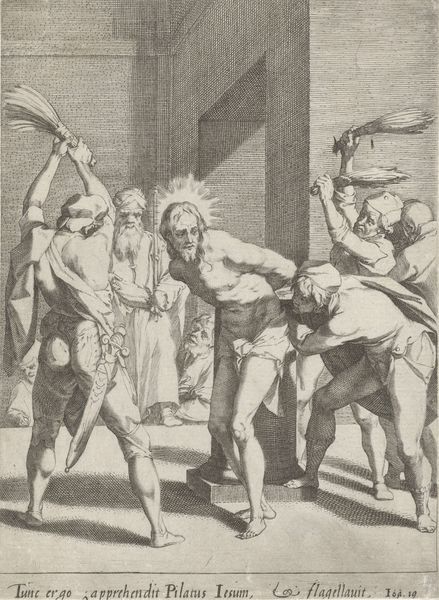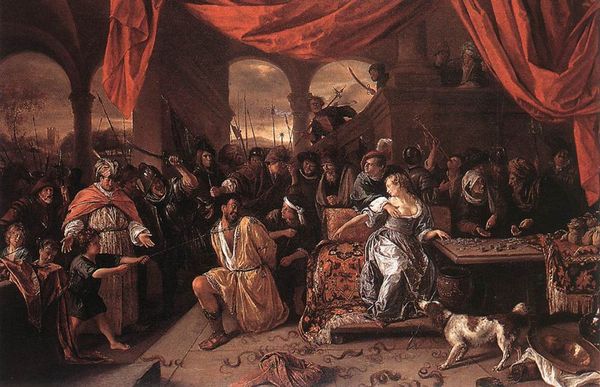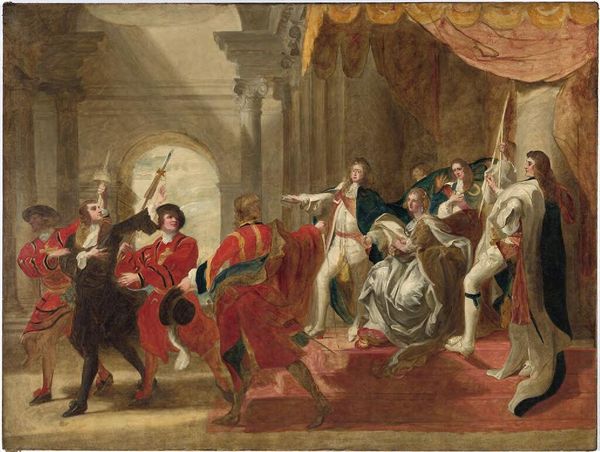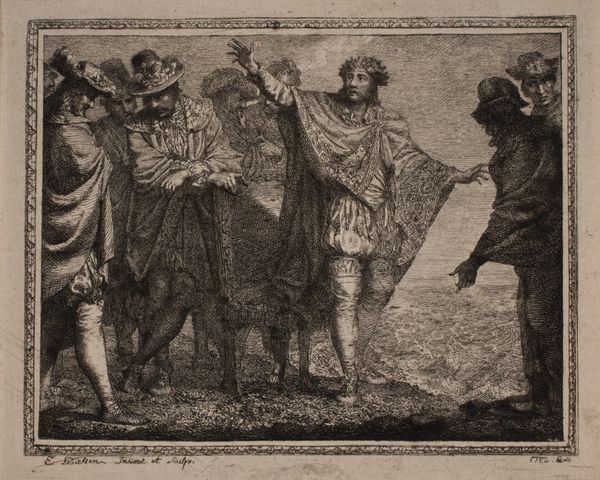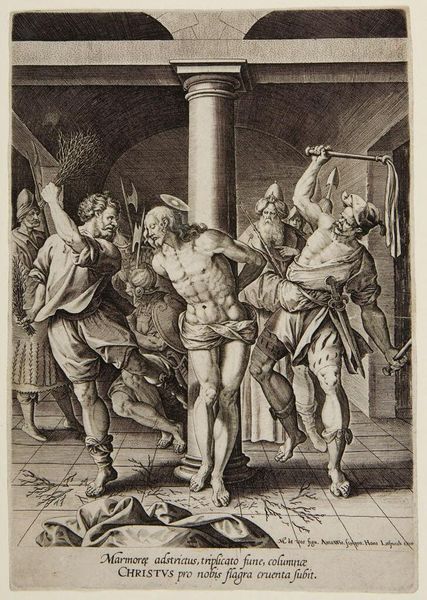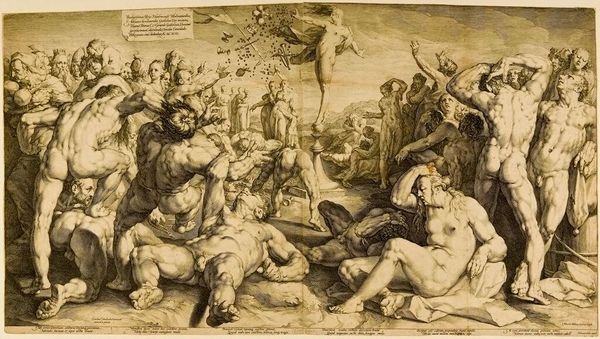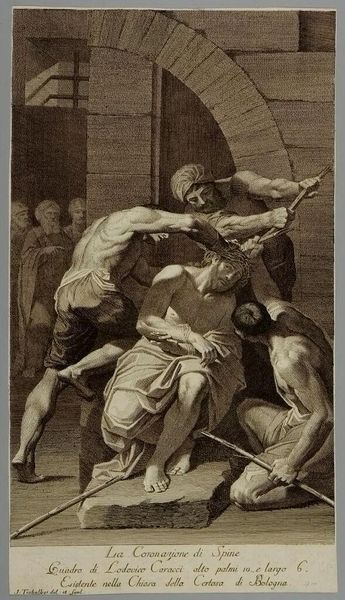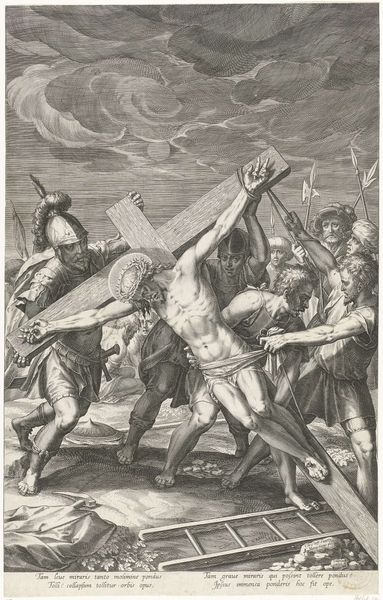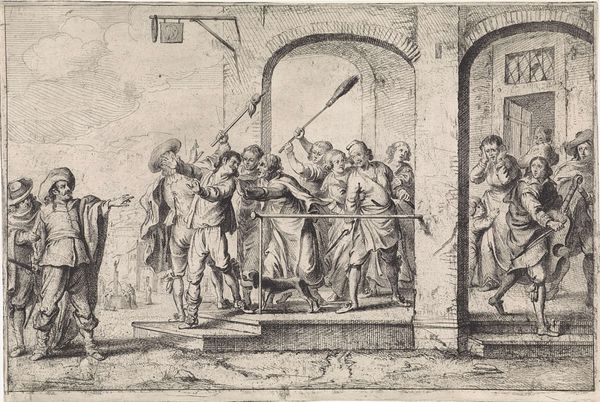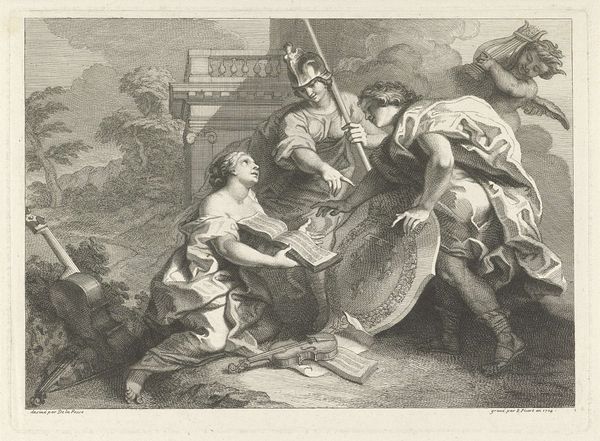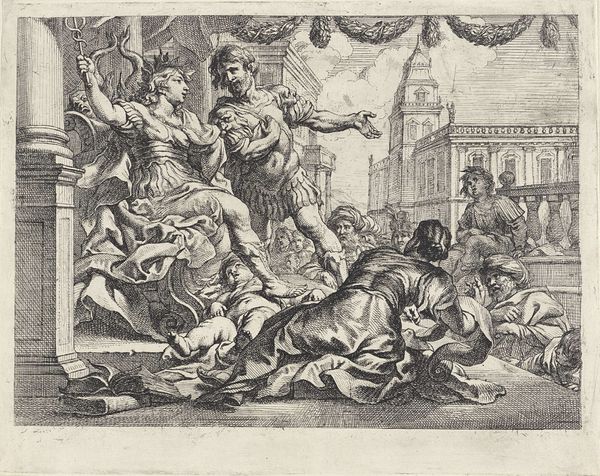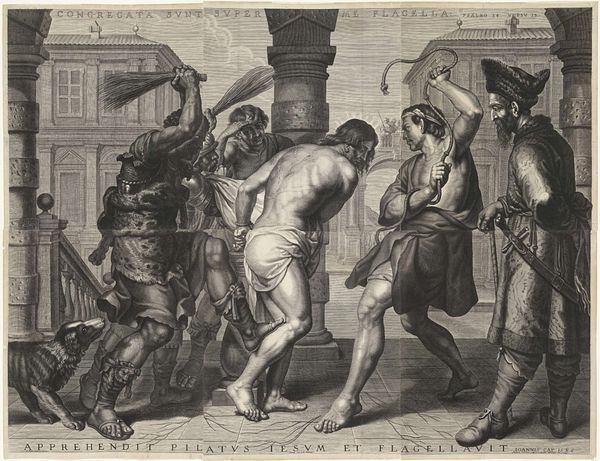
painting, oil-paint
#
portrait
#
baroque
#
painting
#
oil-paint
#
figuration
#
neo expressionist
#
costume
#
costume
#
human
#
genre-painting
Copyright: Public domain
Curator: Immediately, there's a palpable sense of frenetic energy, offset by the cavernous darkness. Editor: We're looking at "Carnival Clowns," an oil painting executed around 1620 by Willem Cornelisz Duyster. It depicts a group of figures, illuminated dramatically, mid-celebration. Curator: The way the torchlight slices through the dark interior is remarkable. Light often represents enlightenment or divine presence, yet here it reveals what appears to be... a slightly unhinged revelry. This juxtaposition speaks volumes. Carnival itself has ancient roots in rites of reversal, so perhaps we’re seeing a visual manifestation of social boundaries being tested. Editor: From a formal perspective, the composition is masterfully arranged. Note how the artist employs chiaroscuro – the stark contrast between light and dark – not only for dramatic effect, but to guide the eye through the chaotic scene. Observe how the brightest figure, centered and in motion, literally pulls the other costumed performers into the pictorial space. Curator: Costumes are never mere decoration, are they? These particular characters likely originate from the commedia dell'arte tradition. It would be worthwhile to look into their individual symbolic roles, in order to better grasp Duyster’s allegorical intentions here. Does their masked license allow for social critique? Or are we witnessing a straightforward endorsement of ephemeral pleasure? Editor: The texture, even from afar, conveys a richness and almost tangible density; you can nearly feel the fabrics and the smoky air. And while the faces are partly obscured by masks, their expressions and the kinetic arrangement convey a spectrum of emotions, hinting at much deeper narratives hidden within that moment. Curator: I am left with a deep feeling for the temporal. It’s a striking visual statement about joy, masquerade and transformation. And perhaps, on a deeper level, how even in festivity, shadow is ever-present. Editor: Indeed, the longer I observe this artwork, the more its inherent structural balance surprises and gratifies. There's both chaos and order here, a dichotomy well expressed within its complex aesthetic architecture.
Comments
No comments
Be the first to comment and join the conversation on the ultimate creative platform.
